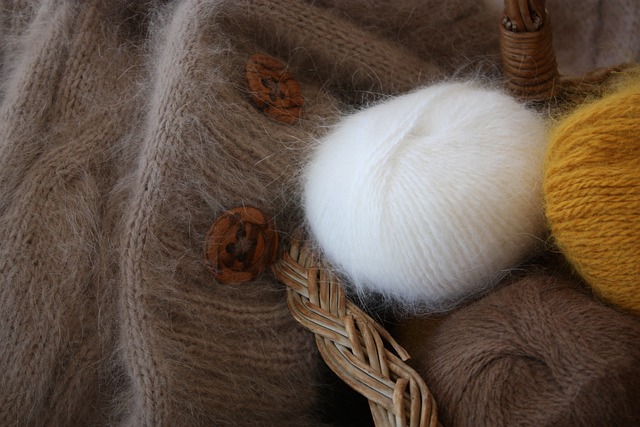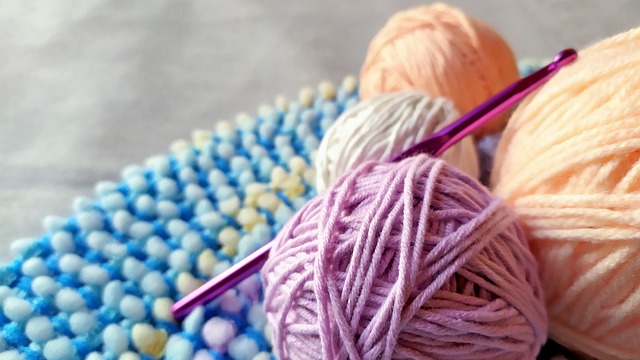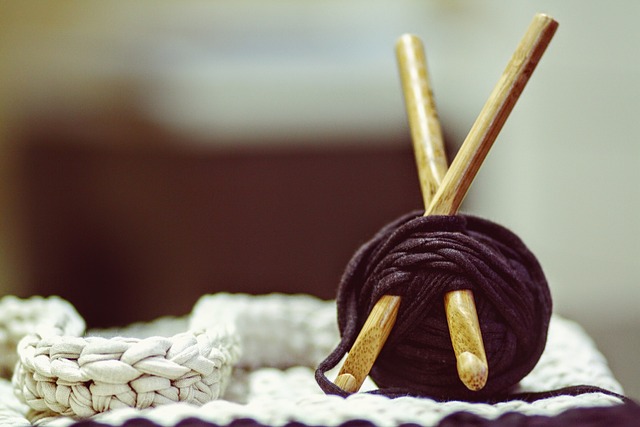Crochet can curl due to uneven tension, stitch types, and yarn properties, causing the edges to turn inward or outward.
Crocheting is a delightful craft that allows you to create intricate and charming designs. However, one common frustration that crochets encounter is the tendency for their projects to curl.
Why does my Crochet Curl? This perplexing phenomenon can be attributed to a combination of factors, including tension, stitch types, and yarn choices.
Understanding these dynamics is crucial to taming the curl and achieving a flat, polished finish in your crochet creations.
In this post, we delve into the reasons behind the enigmatic curl and uncover effective strategies to conquer it, transforming your crochet pieces into beautifully laid-out works of art.
Understanding the phenomenon of crochet curling
Crochet curling is a common occurrence where the edges of a project turn inward or outward. This phenomenon arises from various factors, including stitch types, tension inconsistencies, and yarn characteristics.
Stitches with varying heights and tensions on each row can lead to curling. Yarn properties, such as fiber content and thickness, influence how a project curls.
Understanding these elements helps crocheters anticipate and address curling, enabling them to create smoother, more polished finished pieces.
Blocking, stitch selection, and proper tension control are essential techniques to effectively counteract and minimize crochet curling.

Why does my crochet curl?
In the realm of crafting, the mystery of crochet curling casts a spell of curiosity. Threads of tension, stitch intricacies, and material properties weave together, creating an enchanting puzzle.
So, why does your crochet curl? Explore with us as we delve into the captivating world of crochet curl.
Wrong Stitch Selection:
Certain crochet stitches, particularly those with height differences between rows, can encourage curling due to the imbalance of tensions.
Tension Inconsistencies:
Uneven tension while crocheting can lead to varying stitch sizes and curling at the edges.
Yarn Properties:
Yarn weight, fiber content, and twist influences the curling tendencies. Some yarns naturally encourage curling more than others.
Selection of Small Hook Size:
Using a too small hook for the chosen yarn can create tight stitches, which contribute to curling.
Blocking and Finishing Techniques:
Inadequate blocking or finishing can exacerbate curling. Properly blocking a project involves reshaping and setting the stitches to counteract curling tendencies.
Project Size and Shape:
The dimensions and shape of the project contribute to curling. Smaller items or those with irregular shapes are more likely to curl due to the concentrated tension differences.
Pattern Design:
Intricate stitch patterns and color changes can affect curling. Some patterns inherently cause the edges to curl due to the arrangement of stitches, while others might flatten out the fabric.
Project Size:
Smaller projects are more prone to curling as they have less surface area to counteract the forces generated by tension and stitch differences.
Edges and Borders:
The type of border or edging added to a crochet piece can influence its curling tendency. A sturdy border might help to prevent or minimize curling.
How Do Flatten Curly Crochet?
Unlock the artistry of crochet as we delve into proven techniques that conquer the persistent challenge of curling. Discover how to wield hooks and yarn to create beautifully smooth and balanced creations.
Flattening curly crochet can be achieved through several effective methods. Here’s a step-by-step guide:
Blocking Magic:
After completing your crochet piece, dampen it with water, then gently shape and pin it to the desired dimensions. Allow it to air dry completely. Blocking relaxes the fibers and helps reduce curling.
Border Brilliance:
Adding a border or edging can help weigh down the edges of your project, counteracting curling. Choose an edging that complements your design while providing the necessary stability.
Steam Smoothing:
Another method involves using a handheld steamer. Apply steam to the curly areas while gently flattening them with your hands.
Be careful not to press too hard; let the steam work its magic. Afterward, allow the piece to cool and set in the flattened position.
Weighted Relaxation:
Lay your curly crochet on a flat surface. Place weights, such as books or other heavy objects, along the edges that need flattening.
So, leave the weights in place for a day or two, allowing the piece to reshape under the added pressure.
Double Trouble:
Consider creating a second piece in a complementary stitch pattern. Sew or crochet the two pieces together with the wrong sides facing. This technique can add stability and reduce curling, especially along the edges.
Smart Yarn Selection:
Choose a yarn with a balanced fiber content and twist that is less prone to curling. Experiment with different yarns to find ones that minimize curling in your preferred stitch patterns.
Stitch Strategy:
Choose stitch patterns wisely. Textured stitches and those with height variations between rows are less likely to curl.
Alternating stitch types can create stability and counteract curling.
Tension Mastery:
Practice consistent tension throughout your work. Avoid pulling the yarn too tightly, which can lead to curling. Experiment with different tension levels to find the right balance.
Hook Harmony:
Select an appropriate hook size for your yarn to ensure your stitches are not too tight. Consider using a hook material that allows for smoother stitching, helping to reduce curling.
Pattern Modification:
If curling remains an issue, modify your pattern. Adjust the stitch count, use a different stitch pattern, or incorporate rows of textured stitches to prevent or reduce curling.

How to Prevent the Crochet Curl from the Start?
Preventing the crochet curl from the start involves a combination of techniques.
- Begin by maintaining consistent tension while crocheting to create an even fabric.
- Choose stitches with similar heights within each row or round to avoid uneven tension.
- Opt for a slightly larger crochet hook than recommended for your yarn to relax stitch tension.
- After finishing, block your project by wetting or steaming it and shaping it to set the stitches.
- Select yarn with natural fibers like cotton to reduce curling.
- Incorporate a stable border or edge to counteract curling and choose patterns that naturally lie flat or use techniques to prevent curling.
Applying these strategies from the beginning will result in crochet projects that remain flat and curl-free.
FAQs
Why won’t my crochet stay straight?
Your crochet might not stay straight due to tension inconsistencies, yarn choice, or the nature of certain stitches that inherently cause curling.
Blocking, using appropriate stitches, and maintaining steady tension can keep your crochet projects straight.
How do you permanently stiffen crochet?
To permanently stiffen crochet, you can use a fabric stiffener or a mixture of glue and water. Dip your crochet piece into the stiffening solution, then shape it and let it dry thoroughly.
Why do I crochet so tight?
Tightly, Crocheting can result from holding the yarn too tightly or using a hook that’s smaller than recommended for your yarn.
Does blocking make crochet softer?
Blocking can help relax and shape your crochet project, which may lead to a softer feel, but the softness primarily depends on the yarn you’ve used.
Why Is My Crochet Project Curling at The Edges?
Crochet projects can curl due to various factors such as yarn choice, stitch types, and tension. Certain stitches naturally tend to curl, especially if there’s a lack of balance between the stitches on each row.
Can the type of yarn I use affect crochet curling?
Absolutely. Yarn fibers, weight, and twists affect how your crochet behaves. Some yarns are more prone to curling than others. Choosing the right yarn can help minimize curling.
Do different crochet stitches have different levels of curling?
Yes, different stitches have varying levels of curling. Textured stitches or stitches with height differences between rows are less likely to curl, while flat stitches like single crochet tend to curl more.
Is it possible to prevent crochet curling while working on a project?
Yes, maintaining consistent tension and using proper blocking techniques can help prevent curling as you work. Choosing the right stitch patterns and yarn can also make a difference.
Can changing my crochet hook make a difference in reducing the curl?
Absolutely. The hook size and material can influence your tension, which affects curling. Using a larger hook, a different material, or a different hook shape can help alleviate curling.
Are there any specific types of crochet projects that are more prone to curling?
Projects with many single crochet stitches or projects worked in the round are more likely to curl. Scarves, blankets, and flat items with single crochet tend to curl more.
What should I do if my crochet project still curls after trying various techniques?
If curling persists, consider modifying the pattern by using different stitches, adjusting tension, or incorporating an edging. Experimenting with different approaches can help you find a solution.
Conclusion
In summary, the captivating curling effect in crochet emerges from the tension, stitch choices, fiber characteristics, and design elements.
Understanding these factors empowers crafters to manipulate and control the curl, creating beautifully balanced and well-shaped crochet creations.
If you understood, “Why does my crochet Curl” focus on our given solutions in this blog post.

